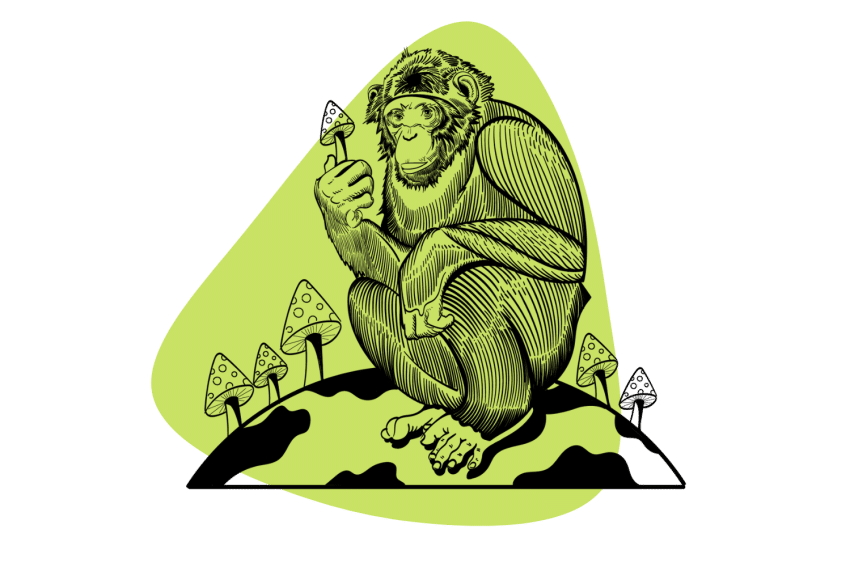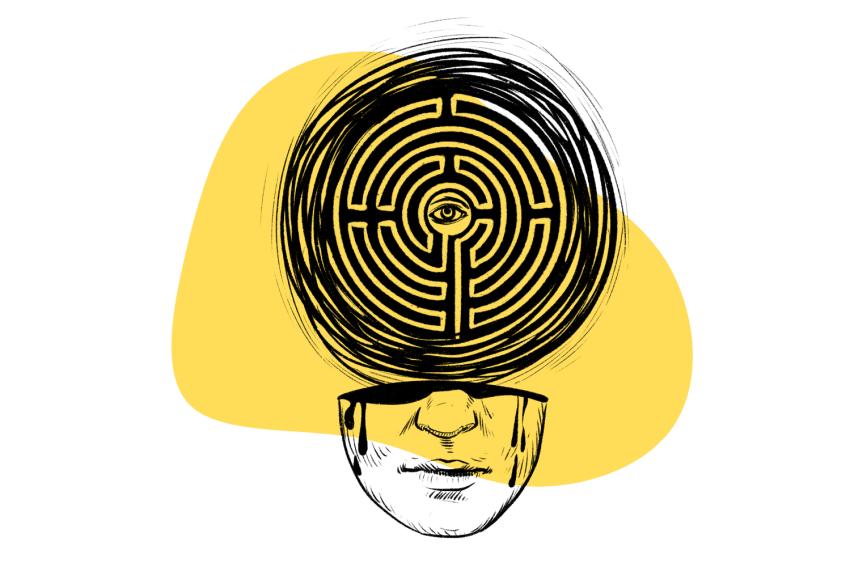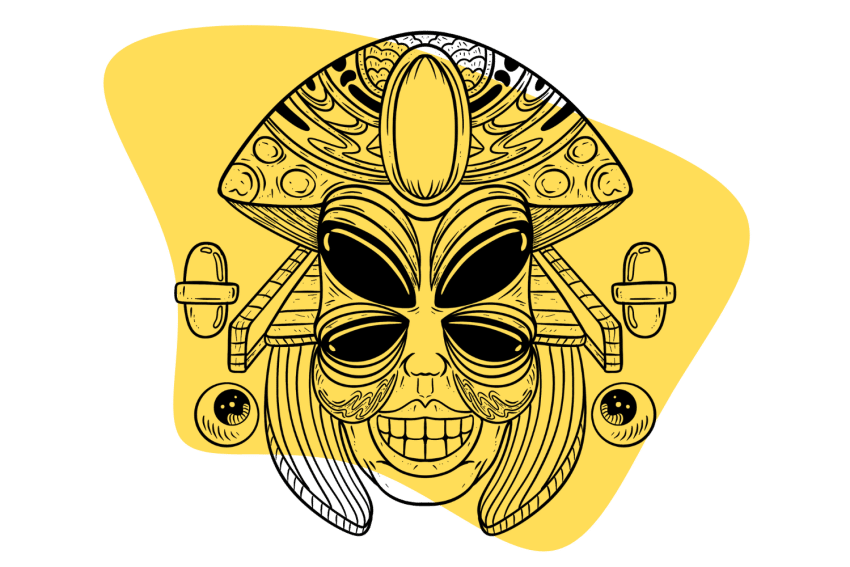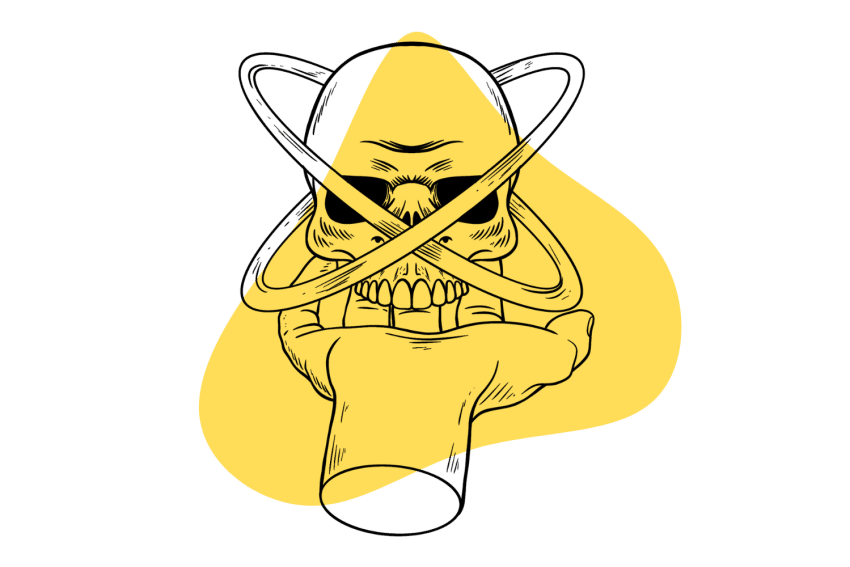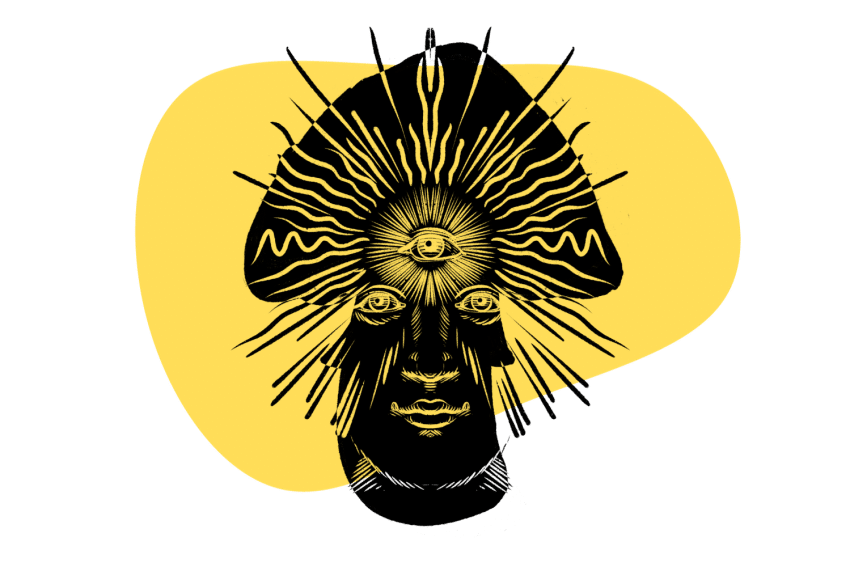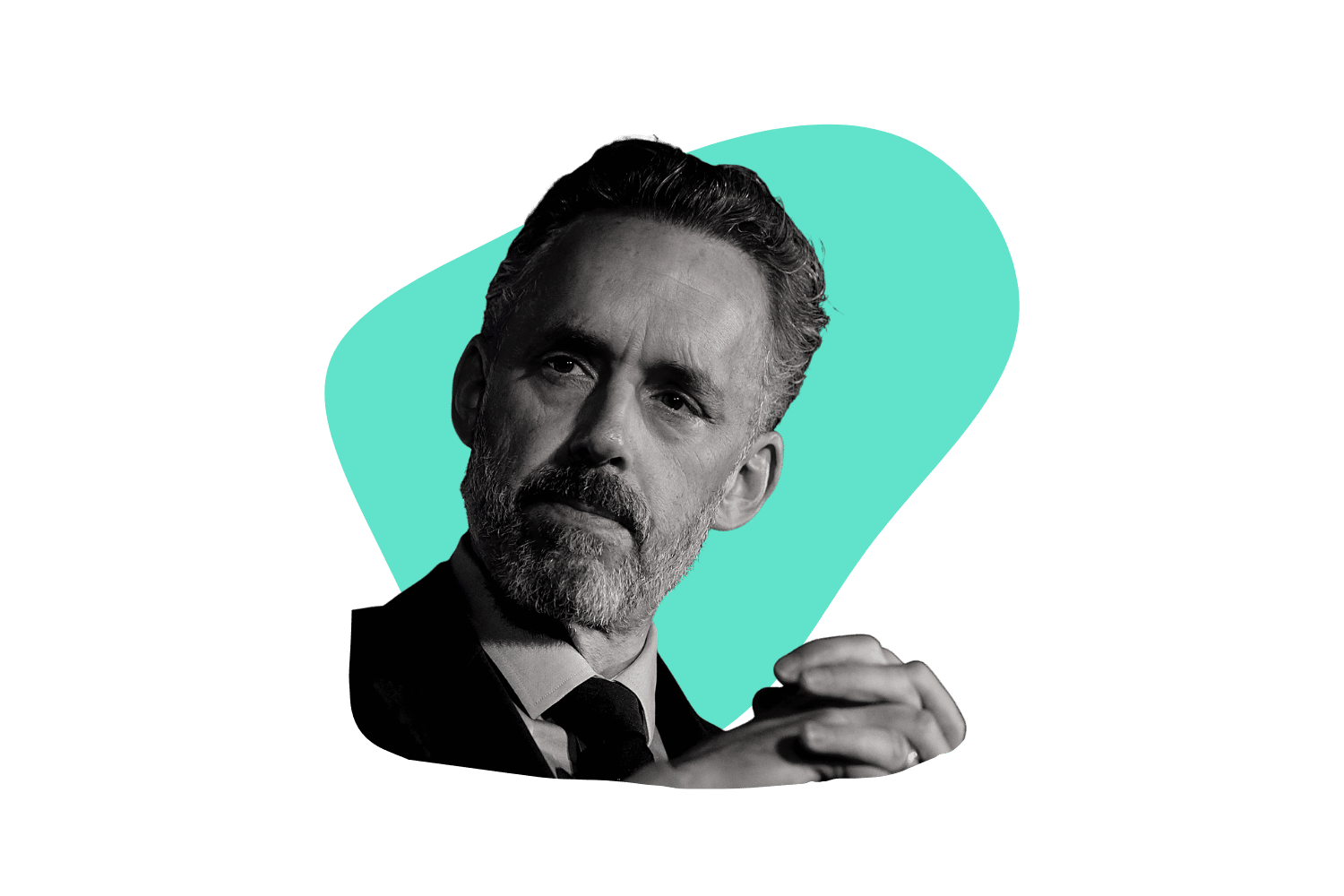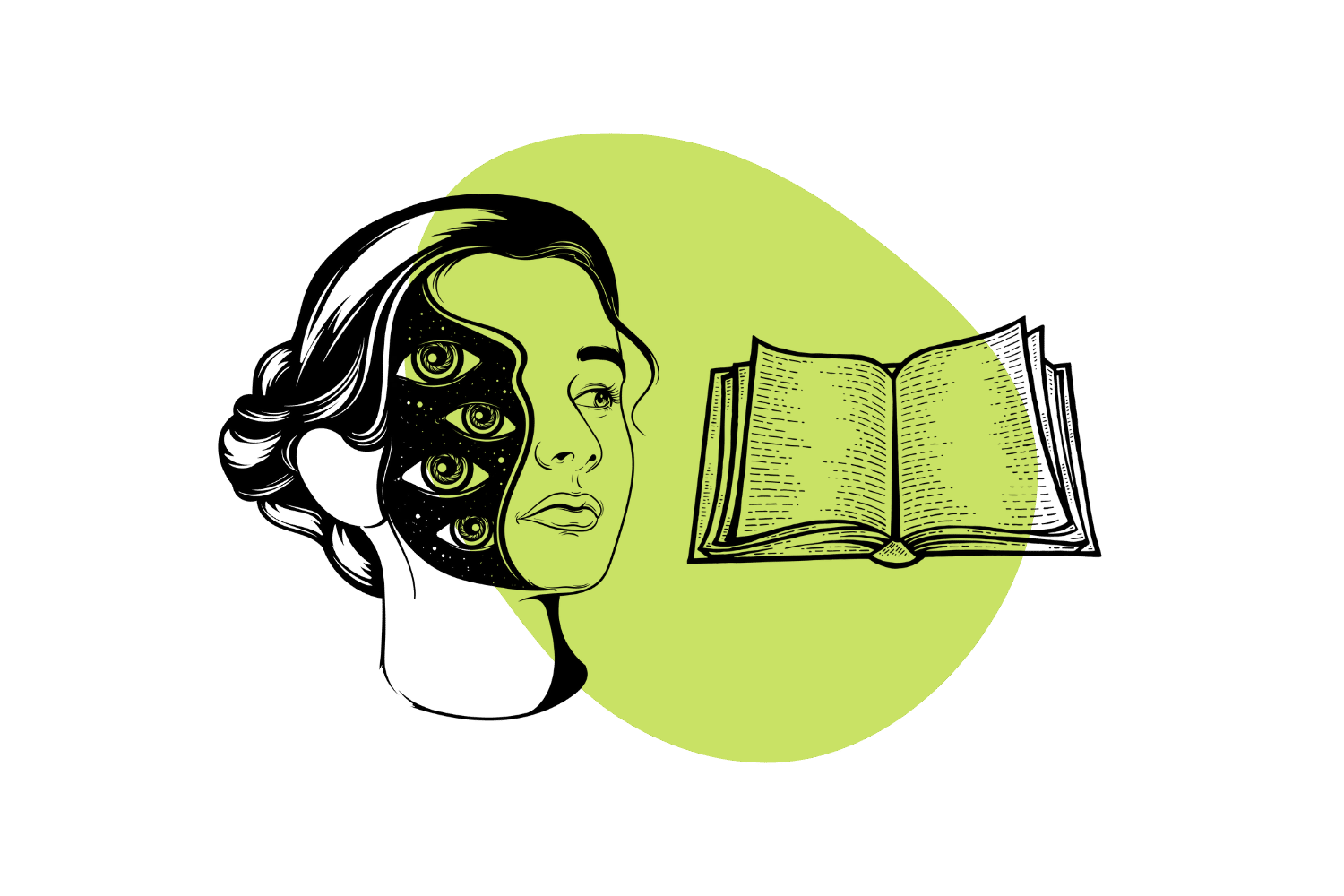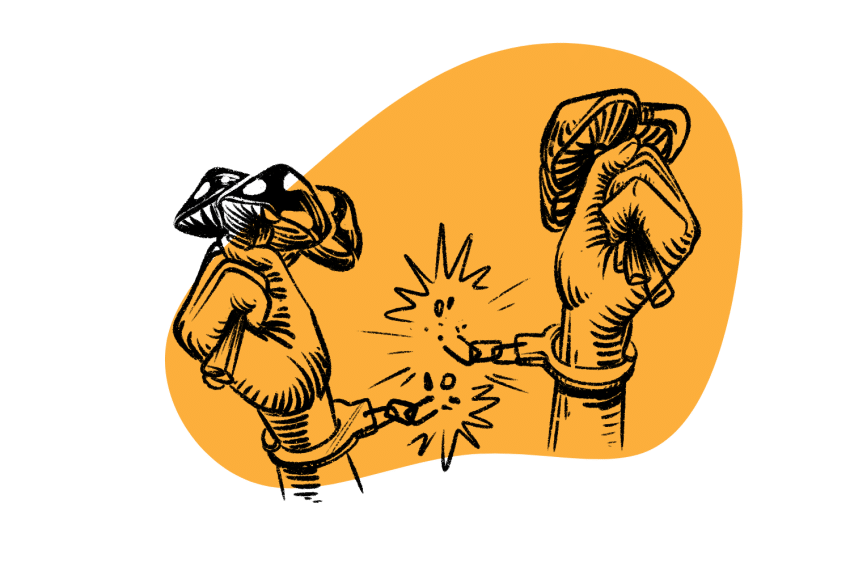Shadow Work 101: Exploring the Shadow & Psychedelics
Shadow work deals with acknowledging and integrating suppressed desires that unconsciously rule our lives.
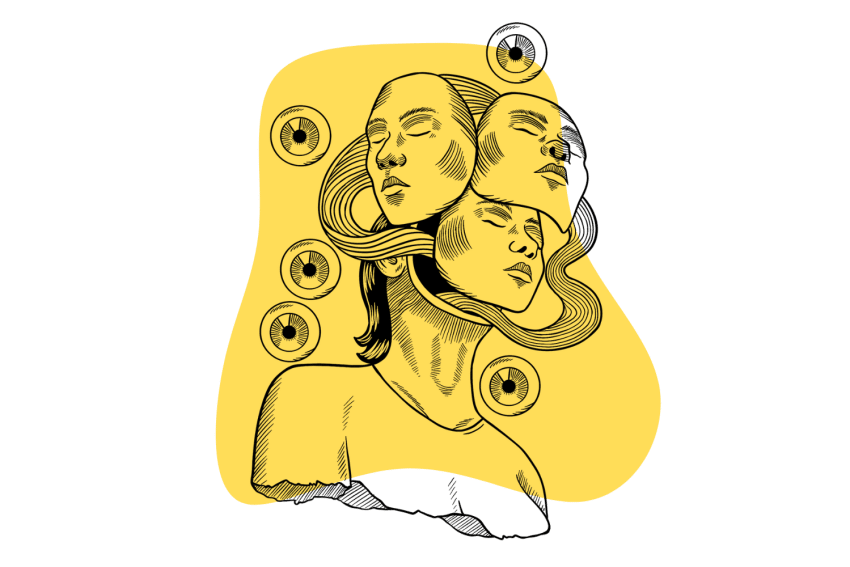
Most people don’t know who they really are — and likely never will.
The human psyche is complicated and much, much darker than we’d like to admit.
There are aspects of our consciousness that remain hidden and out of reach. Even though we can’t quite see what they look like, they maintain influence over our thoughts, emotions, and actions.
This is what Swiss Psychologist Carl Jung referred to as the shadow — the parts of yourself we suppress and reject, but that remain a part of who we are nonetheless. The more we suppress our shadow, the denser and darker it becomes.
The psychedelic experience forces us to face our shadow in one form or another. Psychedelics show us the parts of ourselves we don’t want to see by surfacing them from the deepest, darkest regions of our unconscious.
When we learn to acknowledge and integrate the darker aspects of ourselves, we strip their influence on our unconscious thoughts, emotions, and behaviors. Carl Jung believed that to become enlightened, we must first learn to accept the parts of ourselves our ego doesn’t want to accept.
Get Started Examining Your Shadow Today: 100 Shadow Work Journalling Prompts.
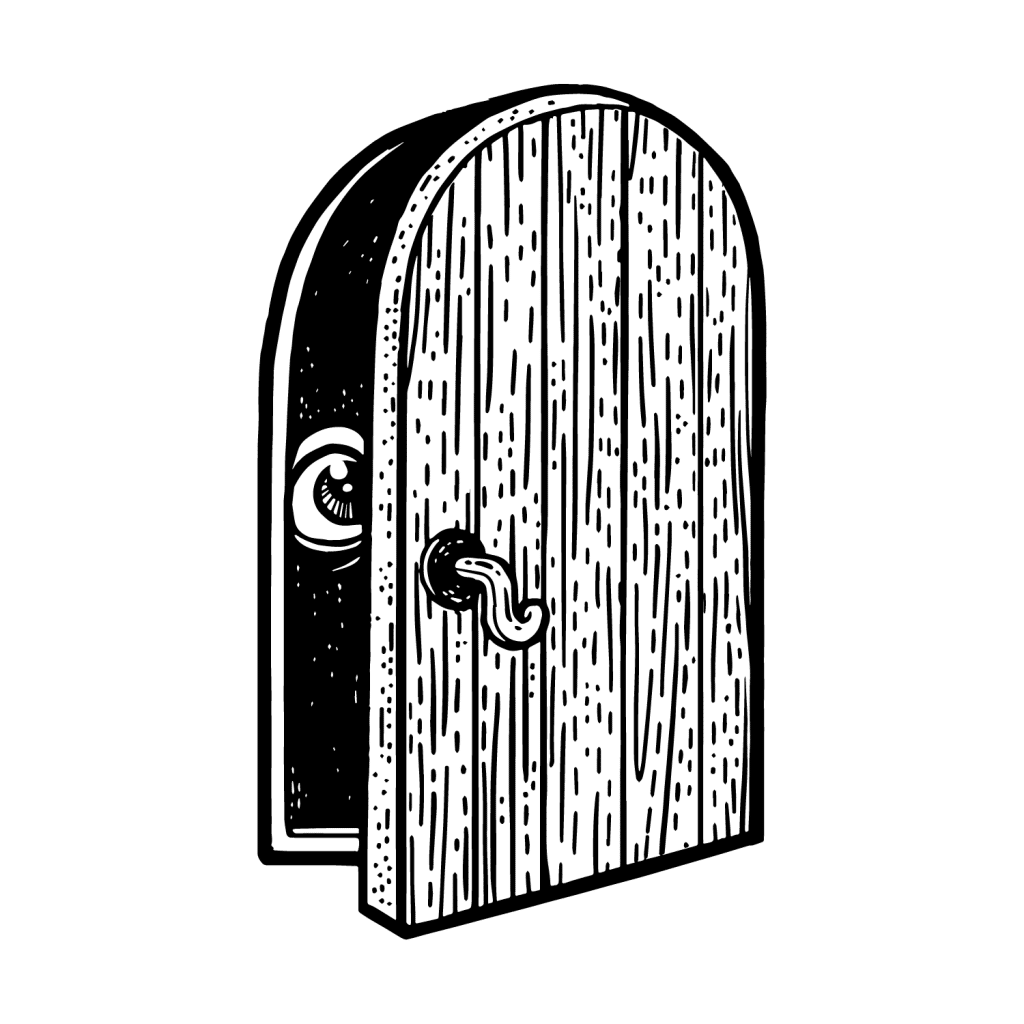
What is the Shadow Self?
The shadow refers to the unconscious aspects of ourselves that we suppress. It’s the parts we either don’t like about ourselves or the parts we think society won’t like.
These are often negative aspects of the self — like rage, greed, lust, or jealousy — but they can also include positive or neutral aspects like playfulness, creativity, or sexual desire.
While Carl Jung brought the idea of the shadow self to the field of psychology, the concept of unconscious influence from traits hiding deep within the psyche isn’t a new idea. Many traditional medical systems have concepts that overlap with the idea of the shadow self — such as soul retrieval in Amazonian shamanic medicine or the concepts behind exorcisms and demon possession.
We can suppress these aspects for a time, but if subjected to enough stress or we become triggered by past traumas, aspects of our shadow can poke through and enter the upper sphere of conscious thought. They present as the very traits we’re trying to repress — like rage, jealousy, or lust.
Traits commonly found in the shadow:
- Selfishness
- Lust
- Greed
- Anger
- Envy
- Desire
- Playfulness
- Creativity
The Shadow & Consciousness
The shadow is just one part of what makes up the self — according to Jung.
Jung highlighted three layers:
1. The Sphere of Consciousness
This is the part of the self we’re aware of and what we think of as being the self. Within this sphere lives the ego, which is the center of consciousness. The ego gives rise to the persona, which is the mask we wear to fit in with society. It’s the traits we wish to embody and have carefully curated to put on display for others.
This is an adaptive quality of being human. We conform by acting and embodying traits we believe will give us a greater chance of fitting in with others and ultimately being more successful in life.
2. The Personal Unconscious
The next level is the personal unconscious, which is a part of the self we’re unaware of, but that’s shaped by lived experiences. This is where the shadow lives, along with other concepts like the anima and animus.
The animus is the unconscious masculine traits in women, and the anima is the unconscious feminine traits in men.
The personal unconscious has a large impact on our thoughts and actions, but we remain unaware of them without exerting a considerable amount of effort to identify, acknowledge, and integrate into conscious control (more on this later).
3. The Collective Unconscious
Finally, there’s the collective unconscious — which is shared by all members of the human species. It’s a sphere of consciousness we’re all born with.
It’s like a download of memories and experiences that we, the individual, did not have.
The collective unconscious of birds is what allows every bird, regardless of how it was raised, to know exactly how to fly South for the winter. It’s also how a newborn baby knows how to feed from their mother’s breast within seconds of being born. You don’t need to teach this to the child; it’s already ingrained into their consciousness.
There are lots of other aspects of the collective unconscious that influence how we think and act throughout life.
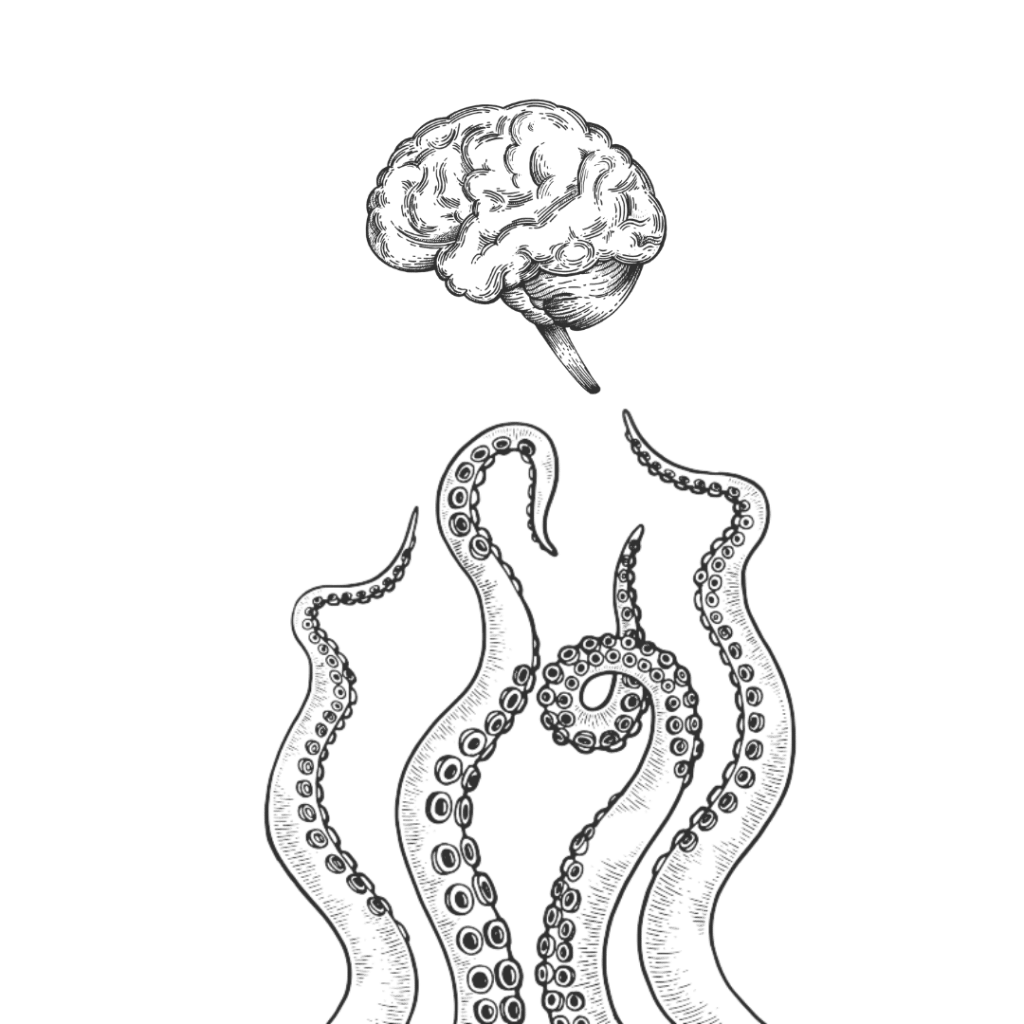
What Causes the Shadow?
Humans are less good than we may like to accept. All humans are capable of atrocities and malevolent actions towards others. Carl Jung was very aware of this after witnessing the Nazi Party’s systematic genocide of the Jewish population. How is it that an otherwise normal, moral German citizen could be transformed into such a monster?
Jung concluded that all humans have the capacity for atrocities, but we suppress the urge in order to conform to the morals given to us by our parents, peers, and society as a whole. These morals are important to be able to live in harmony with others.
Imagine a society where anybody could kill, steal, or rape another person at will. This would be utter chaos. Yet, these urges and desires live within the psyche of each human. It makes sense on a societal level to repress the destructive impulses so we can all coexist peacefully.
There are other reasons for suppressing shadow as well.
For example, young boys are taught to do “boy things,” wear “boy clothing,” and act like men. They’re taught to resist crying as a show of weakness and to favor sports over arts. Teaching children to suppress their desire to engage in more “femanine” activities leads to a darkening of the child’s shadow.
Trauma is another reason someone suppresses certain traits or desires. When a traumatic event happens, especially during childhood, they respond by suppressing thoughts, instincts, or desires in an act of self-preservation. This is a concept explored in-depth by Dr. Gabor Maté, who argues that all forms of addiction and most mental illnesses stem from repressed thoughts and emotions caused by traumatic experiences as a child.
When we don’t acknowledge the dark and repressed aspects of our unconscious self, they control us — affecting how we think, feel, and interact with the world around us.
Only through acknowledging the existence of these darker aspects of ourselves are we able to relinquish their control over our psyche.
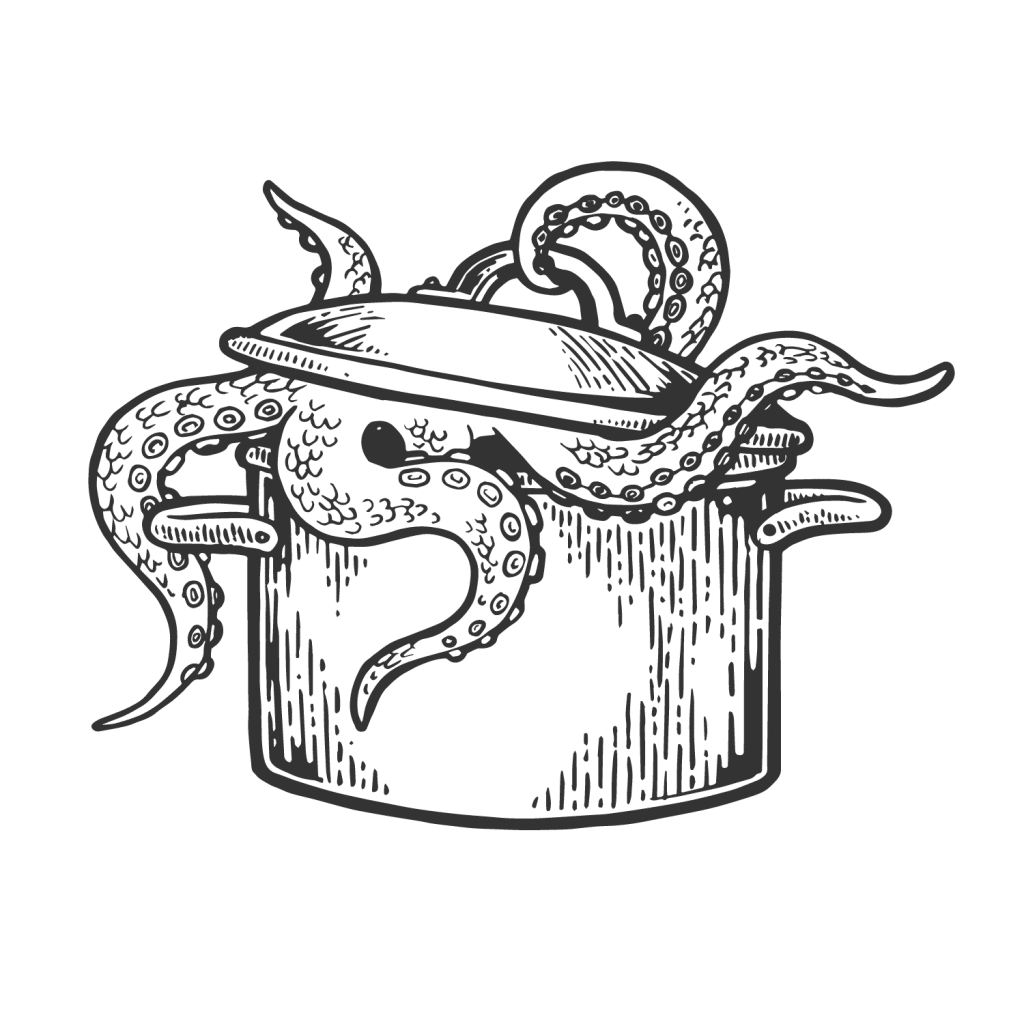
What Happens When We Suppress Our Shadow?
When a thought, emotion, or urge appears that conflicts with our persona, our mind prefers to ignore it and pretend it doesn’t exist. This is easier than confronting it.
Aggression, lust, immoral urges, malevolent mental images, unacceptable sexual desires, or fears are all common elements of the shadow. We can repress these traits successfully for a while, but their influence pokes through into our conscious action. Most of the time, we don’t even notice it’s happening.
Here are six ways a suppressed shadow can show itself in our thoughts and actions.
1. Projection of Undesirable Traits Onto Others
“Everything that irritates us about others can lead us to an understanding of ourselves” — Carl Jung
Projection causes us to pick apart certain aspects of others — such as criticizing someone’s style or intelligence or harshly judging them for decisions or life choices they’ve made. This attack comes from an attempt to mask aspects of ourselves we refuse to accept.
When we call someone “stupid” or attack their appearance — it reassures us that we’re not like them and lack the negative traits we’re scrutinizing about them. Somewhat ironically, the points we choose to attack are most often the traits we embody the most in ourselves.
A good example of this is people that actively judge and attack homosexuals. It’s these people that are usually the most insecure about their sexuality and may have repressed homosexual desires they’re working to cover by projecting the disdain onto others.
2. Disconnection & Addiction
Another unconscious method of repressing the shadow is to sever the connection between the mind and the body. This can be through drugs or alcohol, compulsive work or exercise, sugar, sex, or any other activity that distracts us from the reality of how we feel.
Suggested Reading: How Psychedelics Are Reinventing Addiction Therapy.
3. Unacknowledged Biases
The ability to make assumptions is actually a very useful feature of the human brain. Assumptions help us move through life more efficiently and identify both dangerous situations and advantageous situations more quickly. They basically increase our odds of survival.
However, they can also become toxic or unhelpful just as easily.
A lot of the racism and prejudice happening around the world comes from aspects of our unconscious that’s projecting inner instincts and desires in an act of repression — which unconsciously establishes the assumptions we make about others.
4. Impatience & Outbursts Towards Others
When something conflicts with the story our ego paints for us, we react impulsively to avoid “offending” the ego. Our unconscious shadow often takes the wheel, leading us to do things we regret later on.
This most often comes out towards subordinates, children, customer service employees, or anybody we feel we have some level of control over.
Exerting power over another is an unconscious way of compensating for the powerlessness someone has in their own life.
5. Playing the Victim
By playing the victim, you aren’t seen as the “bad guy” and therefore don’t have to take responsibility for your actions.
Many people will first lash out, criticize, or wreak havoc on another — then, after feeling shameful for having done it, will play the victim so others and themselves can feel as though they’ve done nothing wrong.
As with all of the other points on this list, this is something we do unconsciously. People who play the victim, when called out or confronted about it, may even double down and play the victim about playing the victim.
6. Narcissism & Selfishness
This is a common expression of the shadow in people who think they’re enlightened, wiser, or in some way better than everybody else. They can do no wrong and often present themselves as a guru or mentor to others as a way to cover their own repressed shadow.
Spiritual narcissism is a phenomenon where someone ironically believes they’re at a higher level of consciousness than others. The most ironic part is that this very thought is detracting from their ability to wholly connect with the self in an “enlightened” manner.
Why Should We Work To Integrate Our Shadow?
“Until you make the unconscious conscious, it will direct your life and you will call it fate.” — Carl Jung
Have you ever done something that hurt someone and promised yourself, “I’m never going to do that again” — only to repeat the action over and over again?
This is why people seek to integrate their shadow. It’s a key aspect of Carl Jung’s idea of individuation — which is a process of working, gradually, towards being whole.
The goal isn’t to get rid of your shadow — this isn’t even possible. The goal is to identify it and acknowledge it as being equally a part of yourself as the rest of you. This is called integration. The practice seeks to remove the influence these repressed traits have over your behaviors, thoughts, and emotions.
Someone who works to integrate their shadow knows they’re capable of doing something deemed as being “bad,” like cheating on a partner, killing someone, or stealing — but they choose not to.
Someone who hasn’t integrated their shadow suppresses these thoughts and denies the possibility that they exist — which ironically makes them more likely to follow through with these thoughts and desires — often at their own detriment.
Here are just a few of the improvements people experience when they start paying attention to their shadow:
- Improvements in relationships — You gain a higher degree of patience and the ability to connect with others.
- Improvements in mood — When you’re conscious of your emotions, it’s more difficult to feel sad, angry, or upset.
- Improvements in physical health — Stress is a much bigger component of illness than you might expect. When you learn to integrate negative emotions, you end up feeling less stress, which positively impacts your life.
- Improvements in creativity — The unexamined mind can easily interfere with the creative process.
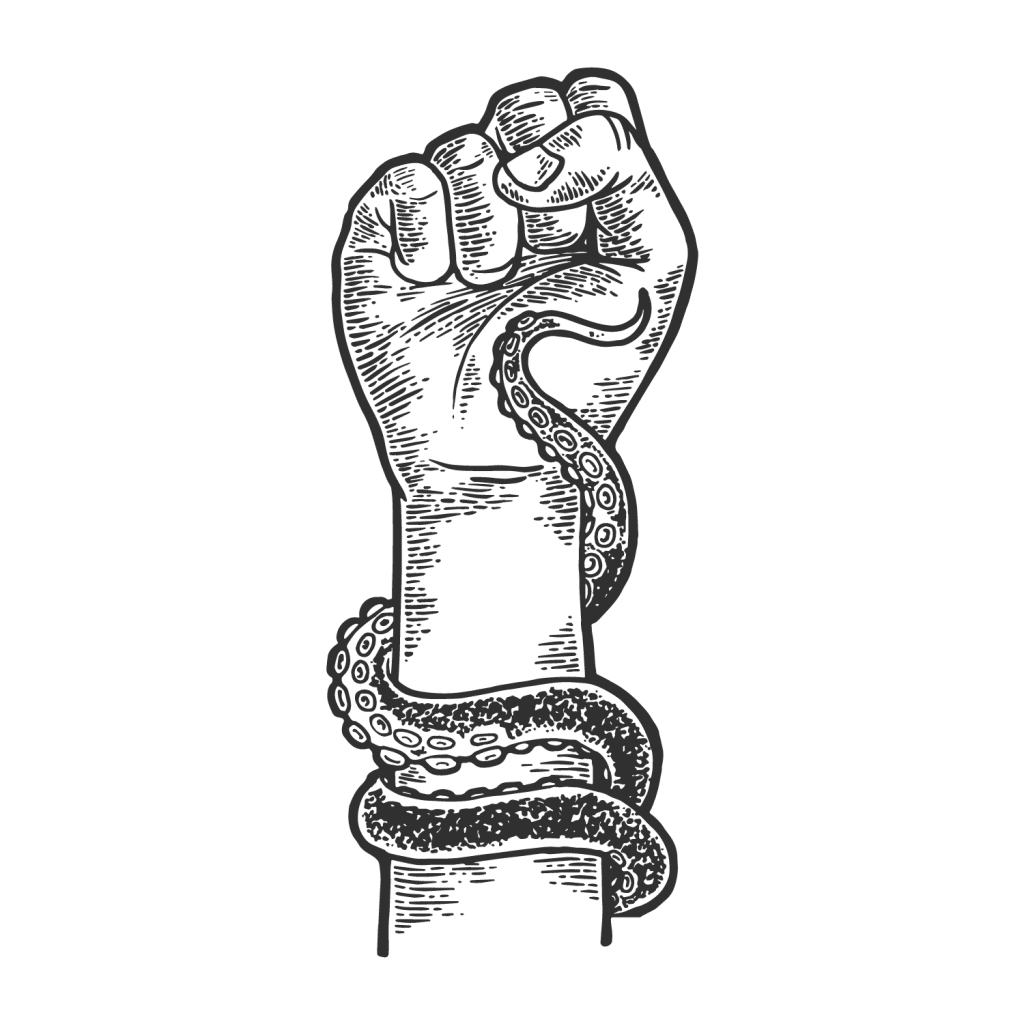
Integrating The Shadow
“The shadow is a moral problem that challenges the whole ego-personality, for no one can become conscious of the shadow without considerable moral effort. To become conscious of it involves recognizing the dark aspects of the personality as present and real. This act is the essential condition for any kind of self-knowledge.” — Carl Jung
No part of the unconscious is under our control. We don’t choose to have impulses and desires — so the concept behind shadow work is acknowledging them for what they are rather than trying to ignore or hide them.
Shadow work is the process of identifying with the darker or repressed elements of the psyche.
It’s the process of making the unconscious conscious.
When we do this, we experience awareness of our impulses and gain the ability to choose whether we act on them or not.
Shadow work is something that requires constant care and attention. You can’t go for a weekend retreat to burn off the shadow and come back as an enlightened being. It takes a great deal of work over the course of a lifetime.
The first step of integrating the shadow is to identify it by paying attention to your thoughts and actions. Ask yourself “why” you did something or felt a certain way — rather than placing blame or judgment on yourself for having done it.
Rather than being hard on yourself for having done something, seek to question the reasons behind it. Ask yourself what might have made you respond that way. Be compassionate with yourself. Blaming yourself and labeling yourself as “an idiot,” “selfish,” or an “asshole” only causes you to feel shame — it doesn’t help you understand the unconscious influence that caused you to do what you did in the first place.
Integrating the shadow involves voluntarily confronting the chaos that lives within the psyche. This can be very uncomfortable because our ego will resist it every step of the way.
Like a forest fire clearing way for new growth, we often need to endure the intensity and chaos of a fire in order to make way for new, more “positive” influences in our unconscious. Doing this work transforms many of the traits we deem as negative into something more positive — simply by exerting conscious control over what we do with these traits.
Here are some of the changes that can happen when we learn to integrate our shadow:
- Fear becomes a source of courage
- Aggression becomes a source of passion
- Pain becomes a lesson in perseverance & grit
- Selfishness becomes a lesson in empathy
- Lust facilitates passion, connection, & love
- Grief facilitates connection with the self & others
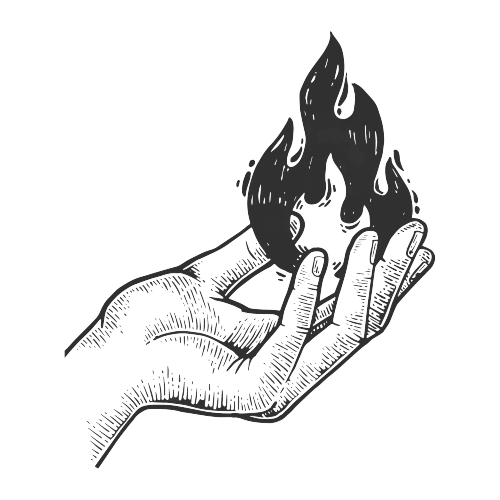
Some key tools people use during this step to help them identify the shadow are psychedelics, therapy, journaling, and meditation.
Related: The Art Of Mindfulness: How Psychedelics Can Help You Live In The Moment.
The Role of Psychedelics In Shadow Work
One of the biggest healing aspects of psychedelics is their ability to dislodge fragments of the unconscious and bring them into focus within the conscious self. This is one of the fundamental qualities that allow psychedelics to reshape someone’s understanding of themselves and others.
Aspects of our unconscious shadow rise to the forefront of our experience. The most undesirable aspects of our psyche are put on display for us, which is very difficult to accept.
The most life-changing and healing psychedelic journeys are also the most difficult ones to endure. They’re agonizing because they show us everything we refuse to accept about ourselves — there’s no filter or beating around the bush; it just is what it is.
When used with the right intention and context, psychedelics could very well be the most useful tool in the field of shadow work. A single session has the impact of months of work through meditation and therapy.
But this pathway isn’t for everybody.
Ontological shock is a phenomenon that happens after a profound psychedelic experience that’s so powerful it completely shifts one’s worldview — causing someone to exhibit physical manifestations of shock (like rapid heart rate, a sense of impending doom, and anxiousness). This usually lasts a few hours but may go on for days or weeks for some people. It’s a situation we want to avoid.
Even Carl Jung famously cautioned about using psychedelics for shadow work. He said, “beware of unearned wisdom.” Essentially, psychedelics may give us information we aren’t quite ready for.
It’s like jumping into the deep end of the pool without first learning how to swim. If we don’t drown, we certainly learn how to swim quickly, but it’s much safer if we start in the shallow end and work our way up as we become stronger swimmers.
Psychedelics Most Often Used For Shadow Work:
Microdosing & Shadow Work
Microdosing has also become a popular tool for shadow work.
The practice of microdosing involves taking small, sub-perceptual doses of a psychedelic compound, like LSD or magic mushrooms, on a recurring basis.
The doses used aren’t high enough to give us any perceptual changes, but they still offer subtle benefits on our connection with the unconscious mind. They don’t forcefully surface past traumas or impulses — but they can help us become more in tune with ourselves as we apply the methods of personal inquiry involved with the process of shadow work.
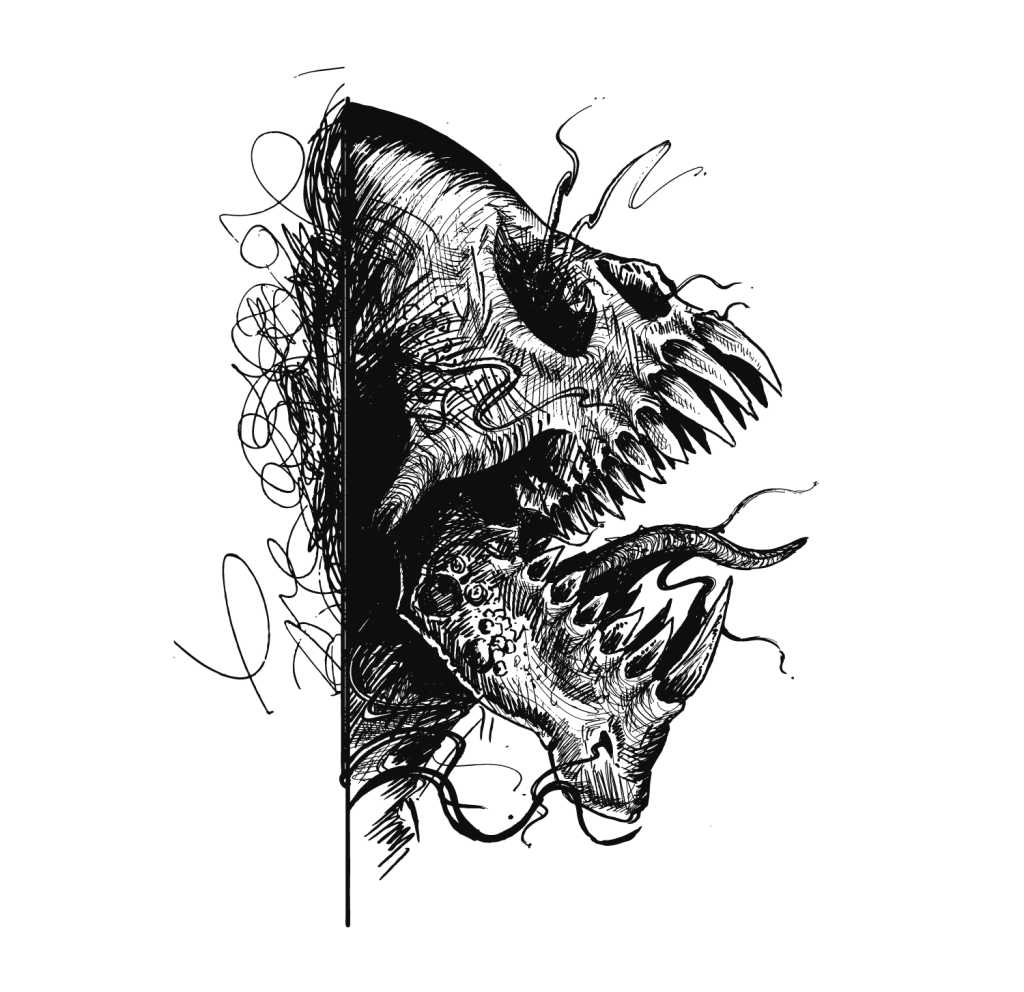
Further Reading: The Shadow
The concept of the shadow and shadow work is just the tip of the iceberg. There’s an entire field of psychology that was born from Jung’s ideas, which have been built on by an ever-evolving group of Neo-Jungians over the past couple of decades.
This post is intended to be merely a jumping-off point for this concept, and there’s a lot of other books, workshops, and lectures that can take you through some of the more intricate details of the individuation process.
Here are some of the best resources I’ve found on this topic so far:
- Alan Watts: Accepting Your Shadow Side [Video]
- Owning Your Own Shadow [Book]
- Shadow & Evil in Fairy Tales [Book]
- King, Warrior, Magician, Lover [Book]
Terms & Definitions
- Shadow — The aspect of the unconscious that consists of undesirable characteristics we reject about ourselves.
- The Anima — The unconscious feminine traits in men.
- The Animus — The unconscious masculine traits in women.
- The Collective Unconscious — An aspect of the unconscious shared by all members of the human species.
- Ego — The center of the field of consciousness, but not the center of our personality.
- The Persona — The mask we wear in order to conform with society.
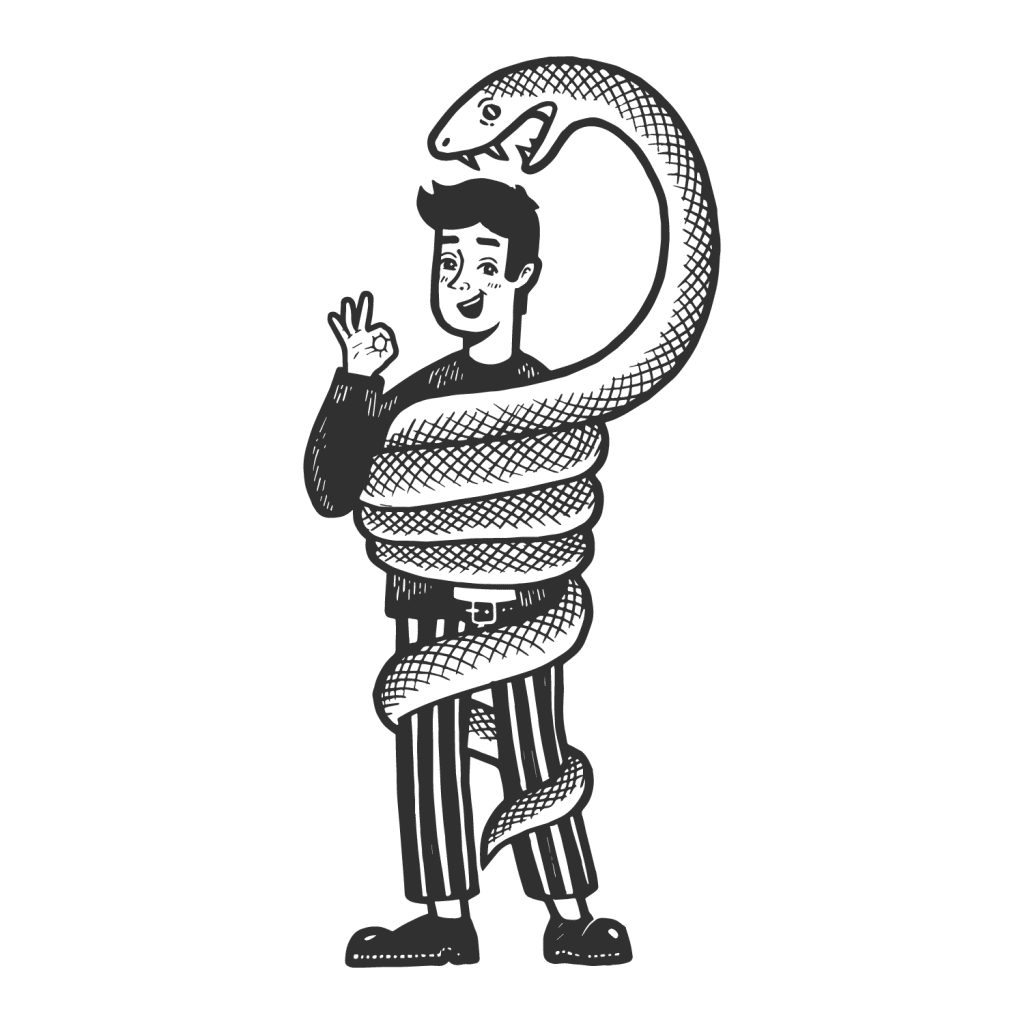
Final Thoughts: How Can I Get Started Integrating My Shadow Today?
Carl Jung’s ideas were well ahead of his time, and he never truly reached the same level of recognition as his predecessor, Sigmund Freud — at least not in his lifetime.
However, today, Jung’s ideas are being revisited, especially within the field of psychedelic-assisted psychotherapy.
Shadow work, especially, has become a popular means of expanding consciousness through the combined use of psychedelics, meditation, psychotherapy, and personal inquiry into why we think, actx and do the things we do.
Shadow work is the lifelong process of learning to identify and acknowledge the parts of ourselves we don’t like to accept as part of our whole. This gives us the ability to retain conscious control over our actions rather than allowing unconscious impulses and urges to sit behind the wheel.
The truly moral person knows they have the capacity to do bad things yet chooses not to. This can only be done by accepting that this capacity exists in the first place.

